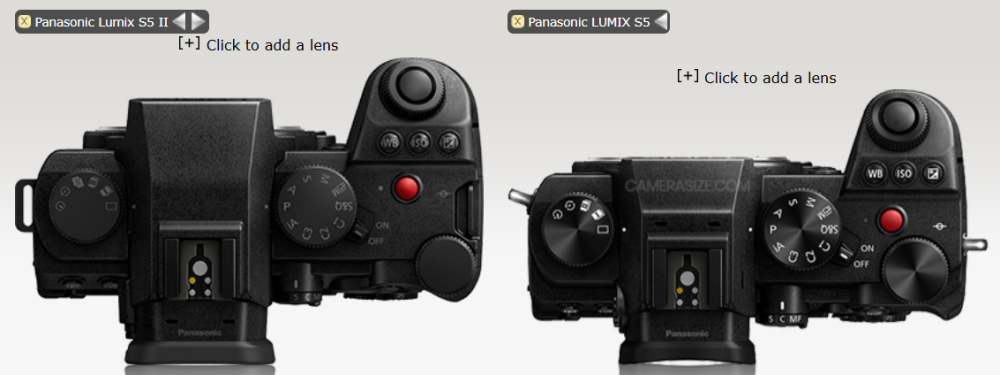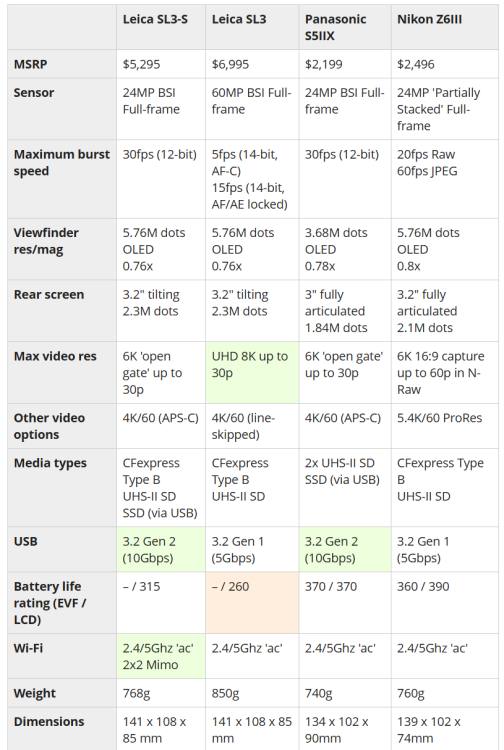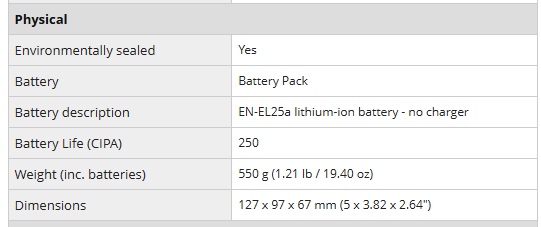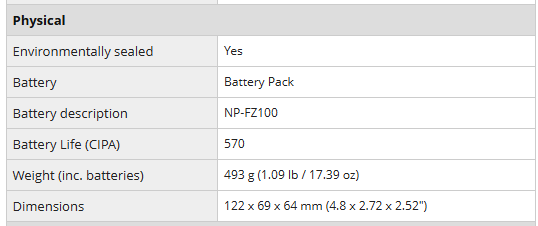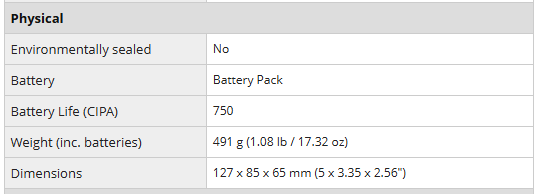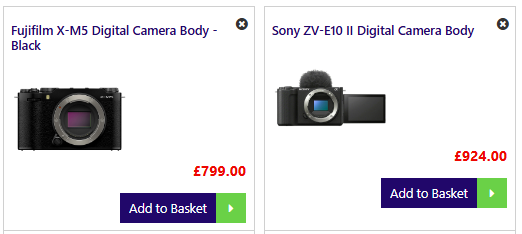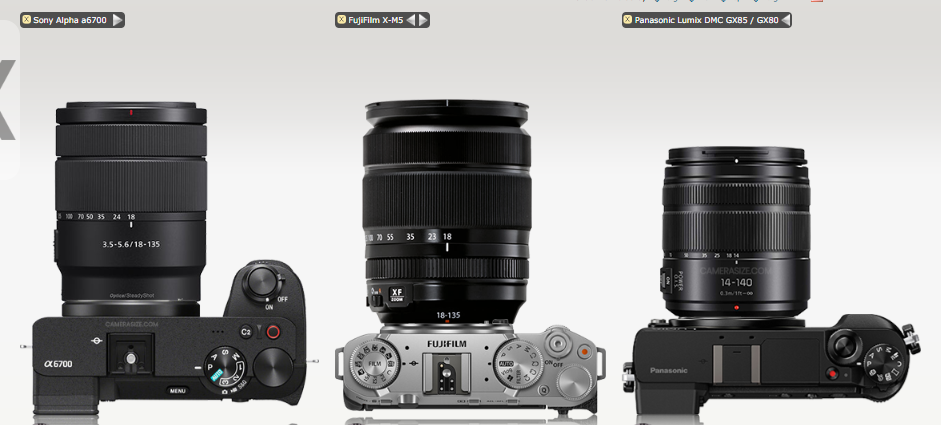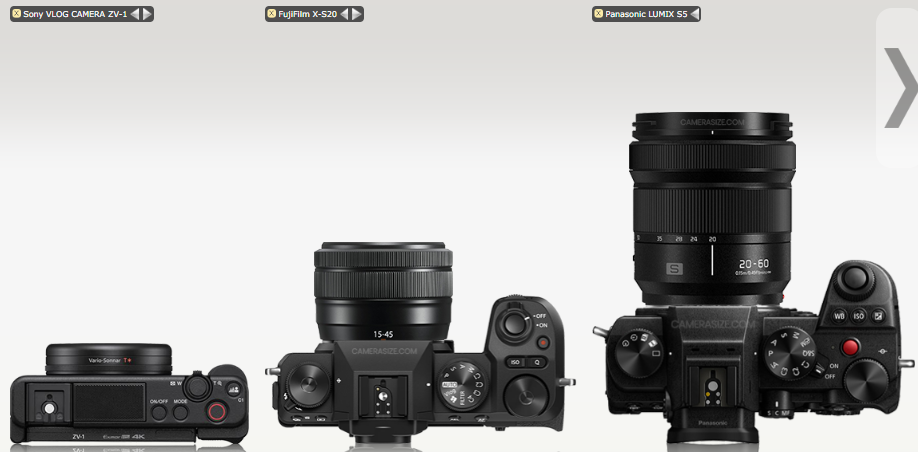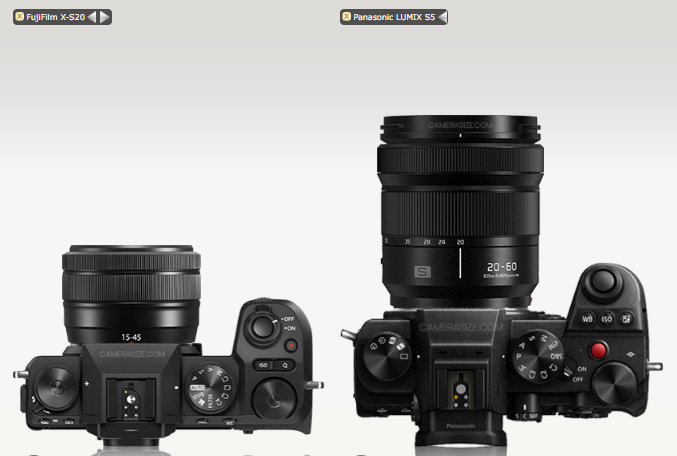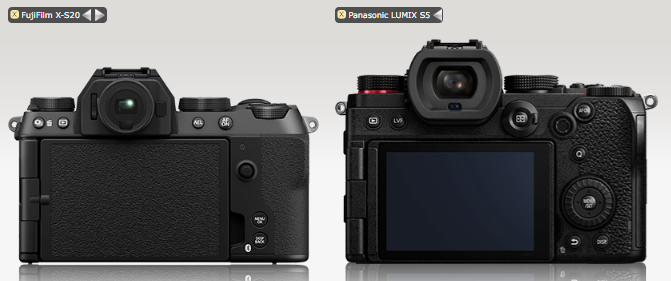
ac6000cw
Members-
Posts
682 -
Joined
-
Last visited
Content Type
Profiles
Forums
Articles
Everything posted by ac6000cw
-
-
...but by modern mirrorless standards it's quite a large and heavy body (from the left A7CR, A7R V, S5ii, S1R). The 1kg S1R is also about twice the weight of the A7CR. That limits the sales appeal of the S1x bodies to people who are prepared to live with the size and weight (and probably hands potential sales to Sony instead, hence Panasonic putting the S5 into a smaller, lighter body).
-
Not a 'flagship', just a decent value 60MP full-frame camera - I think that's the Lumix-brand market area now (with the possible exception of micro43, which is a niche anyway). The high-end of the partnership is Leica-branded... I'm sure Panasonic could design & build a camera with high-end build and feel, but I don't think they have the brand heritage to sell them at high enough prices. For example, the latest Leica version of the LX100 was launched last year, but no sign of a Lumix version so far...
-
Personally, I think they'll release a 60MP camera, probably in an S5ii body and priced somewhere between the A7CR and A7R V, obviously using much the same internals as the SL3. As for an S1H successor - I wouldn't like to bet either way, with Nikon being pretty aggressive on pricing across the Z-range and Canon offering 8K60p on the R5 ii. Where would Panasonic position it in the market, with the S5iix already offering more video features than most people need or use at a sub-$2000 price, and maybe not having access to the high-end Sony sensors Nikon are using in the Z6 iii/Z8/Z9 (or at least not a price that would make sense commercially). Plus of course they have a video-orientated 'flagship' camera in the guise of the GH7...
-
Being realistic, any S1H successor has to at least match and preferably exceed the basic video specs of the Z6 iii e.g. full-frame UHD/6k video up to 60p with sub-10ms rolling shutter, otherwise there's no point (and even fewer sales)... This means a new (to Panasonic) sensor - the old 24MP sensor just won't cut it in that market any more.
-
Yes. Worse battery life (based on CIPA ratings) plus a bit larger and heavier.
-
SL3-s has arrived - https://www.dpreview.com/reviews/leica-sl3-s-initial-review Spec comparison table from the article - it's seems basically an S5iix in a Leica body (at 2.5x the price).
-
I think the E-M1 iii has most of what the E-M1X has (except the AF subject detect and the extra battery) in a smaller package (the used prices are similar, with the E-M1 iii being a bit higher). They are mostly sub-1000 GBP in the UK (and the latest v1.7 FW update improved the subject-detect AF performance quite noticeably). At that price it's a lot of camera for the money. I agree (and the official OMLog400 to Rec709 LUT seems to produce some weird colours - the reds in particular). In case they might be useful to someone using an OM-1, these are some 10-bit BT2020 OMLog400 to Rec709 LUTs (in nine combinations of colour tint and contrast curve) I've made for my own use: https://drive.google.com/open?id=1-HBUDlPN0C3pQRX5c9Trmh8I3aM9hbiz&usp=drive_fs I use Vegas Pro for editing (and generating the LUTs) - so no idea how well the LUTs might work in Resolve etc. (and I rarely shot video where people are the main subject, so skin tone accuracy generally isn't important to me) (...and a big thank you to @Attila Bakos for the great free LUT tools on his Colorizer website )
-
Exactly. When I overhear people trying out/discussing/buying cameras in stores and at local camera shows, my impression is that taking still photos is the most important reason for buying a camera. Video hardly gets mentioned - it's a secondary 'nice to have, just in case' feature, not the main reason for buying what is perceived as a 'stills' camera (mostly because MILCs still look like traditional 35mm film cameras, I guess). What sells reasonably well for camera manufacturers is probably quite different to what interests people on this video-orientated forum (I know that's the case for me).
-
Yes, 10-bit 'Natural' would be really nice to have (and sharpness adjustment in 10-bit).
-
The 4k60p is not as detailed as 4k24/25/30p - see https://www.dpreview.com/reviews/image-comparison/fullscreen?attr29_0=omsystem_om1&attr29_1=omsystem_om1&attr72_0=4k_60&attr72_1=4k&attr421_0=10&attr421_1=10&normalization=full&widget=850&x=-0.3659681831889651&y=-0.46405799840375833 10-bit UHD or C4K at 24/25/30p are the most detailed modes. 50/60p is noticeably softer/less detailed. 10-bit also uses the (better) HEVC/H265 codec. The Sandisk Extreme (non-Pro version) is also fine for 4k60p in my experience.
-
Is suspect the reasons for leaving out IBIS (other than the Mk 1 didn't have it) are cost and weight e.g. the Sony ZV-10 ii doesn't have it either. But it's still larger and heavier than the A6700 and X-S20 (which have IBIS), and has the worst battery life out of the three. Nikon seem to be targeting the ZV-10 ii & X-M5 market price area but with the EVF as added value (in exchange for heavily cropped 4k60p, a larger & heavier body and less extensive moderately priced lens choices). Prices from Wex in the UK: Size/weight/battery life spec extracts from dpreview.com: Z50 ii: A6700: X-S20:
-
...which means it's using a smaller area than a M43 sensor when capturing 4k60p (1.5 x 1.5 = 2.25 crop relative to FF). If you enable EIS (it has no IBIS) that adds an additional crop.
-
It's not my main camera - that's currently an OM-1. I've kept the GX85 for use as a travel-cam, fitted with the 14-140mm lens - that combo is smaller and lighter than some smaller sensor 'superzoom' cameras. Its main downside (for me) is the poor quality audio (and no mic jack to work around that). The cropped 4k video isn't ideal either, but at least it's less cropped than the later 20MP sensor GX9 or G100. So (like you) it's my "when size & weight is more important than image and sound quality" M43 camera. AFAIK the only *reasonably small* hybrid M43 20MP cameras with uncropped 4K are the Oly E-M10 iv & E-M5 iii and the OMDS OM-5 (and they are all taller than the GX85/GX9, and only the E-M5 iii and OM-5 have mic inputs). I've thought about replacing the GX85 with an E-M5 iii or OM-5, but I already also own an E-M1 iii (the OM-5 is based on it internally) which is a bit larger and 170g heavier but is 'free' to me. I think what both of us would really, really like the G9 ii/GH7 sensor and processing in a smaller body...
-
If you need the superzoom lens, the combo of A6700 + Sony 18-135mm is actually a bit lighter (and is a slimmer lens) than X-M5 + Fuji 13-135mm, plus it has an EVF. (Assuming https://camerasize.com/ sizes and weights are accurate). But the Pana 14-140mm is much lighter and smaller than either the Sony or Fuji lens, and has wider zoom range... it's really hard to beat as a 'do almost anything' travel lens. I've been doing these kind of comparisons myself recently, with a view to possibly buying a *small* MILC with better video support than the GX85 I already own (and one that has a mic input). Comparison - https://camerasize.com/compact/#910.702,935.426,673.931,ha,t
-
As a G9 owner, note 4k50p/60p recording time is limited to 10 minutes. It's 30 minutes for everything else. G9 is a later design camera than the GH5 with better IBIS and AF (it's also bit larger than the GH5). It can't be powered over USB, but 3rd party dummy battery power adaptors are cheap. IMHO the (oversampled) 1080 50p quality isn't that far behind 4k50p in real world usage (and it can record it in 150Mbps 10-bit 4:2:2), if you need more than 10 minutes continuous recording. The more recent GH5 ii basically combines the best bits of the GH5 and G9. As for the 'long compact zoom', the Pana 14-140mm F3.5-F5.6 is an excellent small and light 'superzoom' if you don't mind the variable aperture. Probably my all round favourite M43 lens. The 'much brighter at the long end' 35-100mm F2.8 is also fairly compact, but has more focus breathing.
-
Panasonic has added a new S9 firmware update 1.2 to replace the withdrawn FW 1.1:
-
Is Panasonic rethinking high-end full frame mirrorless line-up?
ac6000cw replied to Andrew Reid's topic in Cameras
Interestingly, in the Optyczne.pl 'Movie Mode Test' of the S9, they found some changes/improvements have been made to the video processing compared to the S5ii, so maybe that will turn up in a firmware update for the S5 ii? S9 test: https://www.optyczne.pl/94.4-Inne_testy-Panasonic_Lumix_S9_-_test_trybu_filmowego_Jakość_obrazu.html S5 ii test: https://www.optyczne.pl/70.4-Inne_testy-Panasonic_Lumix_S5_II_-_test_trybu_filmowego_Jakość_obrazu.html Z6 iii test: https://www.optyczne.pl/91.4-Inne_testy-Nikon_Z6_III_-_test_trybu_filmowego_Jakość_obrazu.html There are also some downloadable sample clips on the next "Summary and sample videos" page of the tests. The S5 ii is a 'good value' camera, making the best out of an old, slow (and cheaper) sensor which limits 4K60p to an APS-C cropped region of the sensor. The Z6 iii is nearly twice the price of the S5 ii and has very recent, much faster, sensor allowing full-frame 4k60p with low rolling shutter (and it supports internal RAW recording). It's not really a fair comparison. I had a play (in a camera store) yesterday with an S9 fitted with the APS-C Sigma 18-50mm f2.8 DC DN lens. Quite a nice combination at less than 800g total weight and I thought the handling was OK. As I normally shoot at 50p/60p the S9 would basically be an APS-C video camera for me anyway. Not sure yet if I actually want to buy one (versus other 'compact' possibilities like the ZV-E1, A6700 and ZV-E10ii, which have a much wide range of lenses available) so I think I might sit on the fence for a while and see what happens with the S9 pricing - in what has become quite a 'hot' area of the market. -
Or just buy an X-S20 instead, which has IBIS and EVF.
-
Video quality is the same on both E-M1 ii and iii. Video-related differences are basically better C-AF and IBIS on the iii. Note the E-M1 ii got a major firmware upgrade in June 2019 (to rev 3.0) so if you buy one, check/update the firmware (latest version is rev 3.7). See https://support.jp.omsystem.com/en/support/imsg/digicamera/download/software/firm/e1/ for firmware details. 'OM Log400' on E-M1 ii & iii is only 8-bit, so isn't as 'gradable' as the video from modern cameras with 10-bit Log. Probably better to shoot in 'Natural' or 'Flat' (low-contrast, but not as low as OM Log). As for previewing the image before shooting, don't forget that you can connect a large-screen monitor or TV to the HDMI output of the camera, *but* that might not be available when the camera is 'tethered' to a PC.
-
I remember looking at the E-M5 ii for video some years ago (due to it having IBIS, which Pana didn't have at the time). I downloaded a few test clips from reviews, saw how bad the aliasing was and stayed with Panasonic... I think I'd agree (based on my E-M1 ii & iii versus G85 & GX85 experience), but the GH5 & G9 are at a higher level of quality. especially in 1080p. Yes, video is definitely the 'poor relation' to the stills side on Oly/OMDS cameras (even on the OM-1, which is otherwise a much improved video camera over its predecessors). I'd love to be able to reduce the sharpness in 10-bit video on the OM-1 but you can't (it's close to being over-sharpened) and have a 10-bit 'Flat' or 'Natural' picture profile available. On the other hand, the simple three-level IBIS adjustment and being able to turn on and off magnify/movie tele-converter while recording are really useful. The on-camera audio is better than the Pana G85 & GX85 (which are particularly bad)... I agree. The official 'OMSYSTEM_OM-Log400_BT.2020_to_WDR_BT.709_v1.0.cube' conversion LUT seems to produce odd colours, and I've never found any 3rd party LUTs for the OM-1. After a lot of trial-and-error (and learning about LUTs) I made my own OM-Log400 BT.2020 to BT.709 LUT which I use most of the time.
-
If you can live without 4k 50p/60p, the fixed-lens Sony ZV-1 is tiny but only goes up to 4k 30p max and the battery life is terrible (I use one as my 'pocket' video & stills camera):
-
I think the (APS-C) Fuji X-S20 is one of the smallest MILCs that can shoot 4k 50p/60p, but with a 1.18x crop (on the left, fitted with the small 15-45mm power-zoom kit lens, S5 on the right):
-
Cupboards clearout (DVX100, DX1, old camcorders topic)
ac6000cw replied to Tim Sewell's topic in Cameras
I didn't try it with any of the footage in that video, but I have tried a trial version of Topaz in the past on other 'railway' SD DV footage. Basically I found it not much better than using FFMPEG upscaling and sharpening, so I've never convinced myself to buy it. -
In the UK, I've also found Wex to be quite good for buying and selling used gear - https://www.wexphotovideo.com But for something quite niche like a Bolex D16, as others have said MPB might be more interested in it (but based on my experience, major used dealer buying prices are about half their typical selling price, depending on demand etc. for the item).

